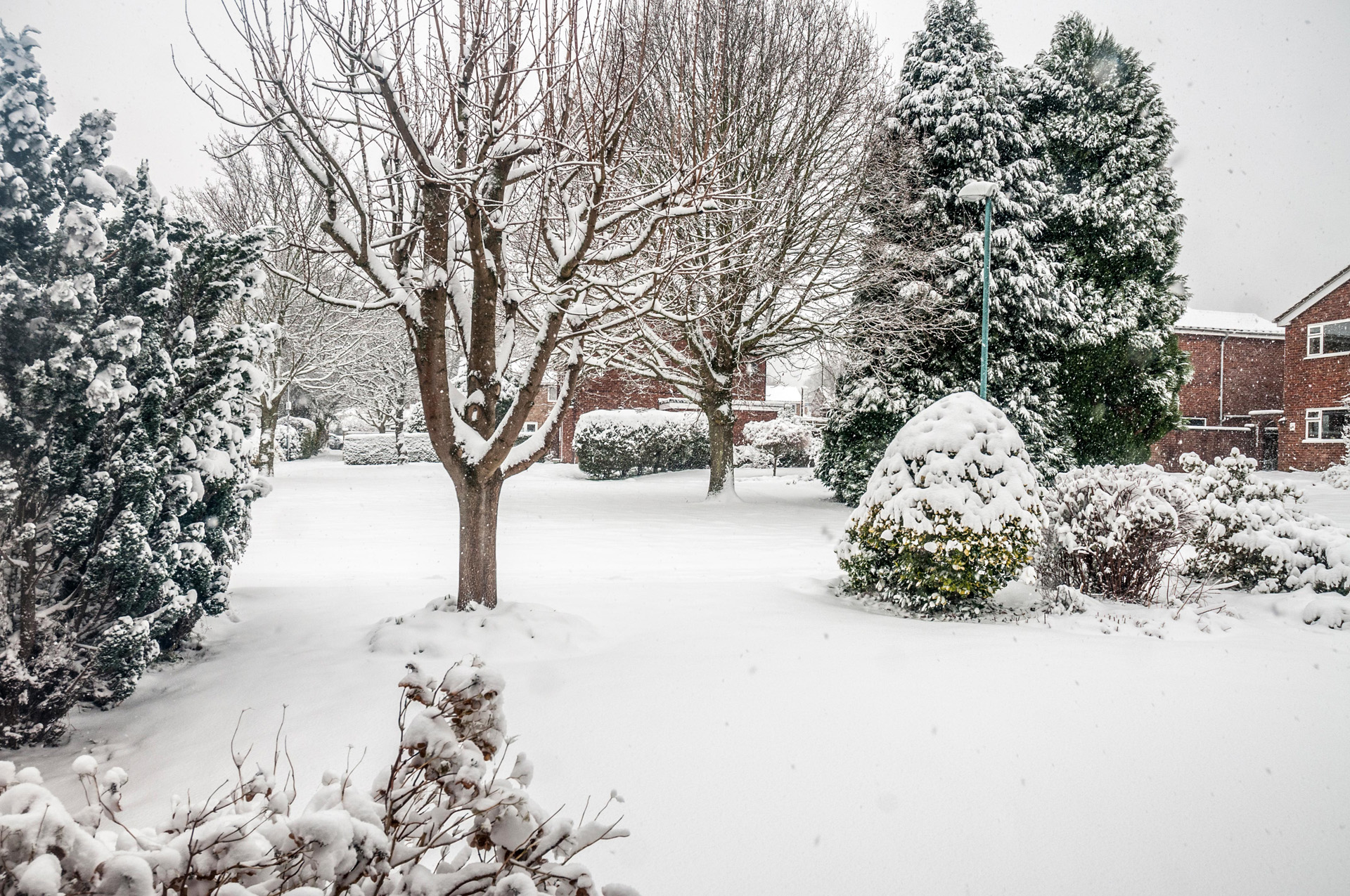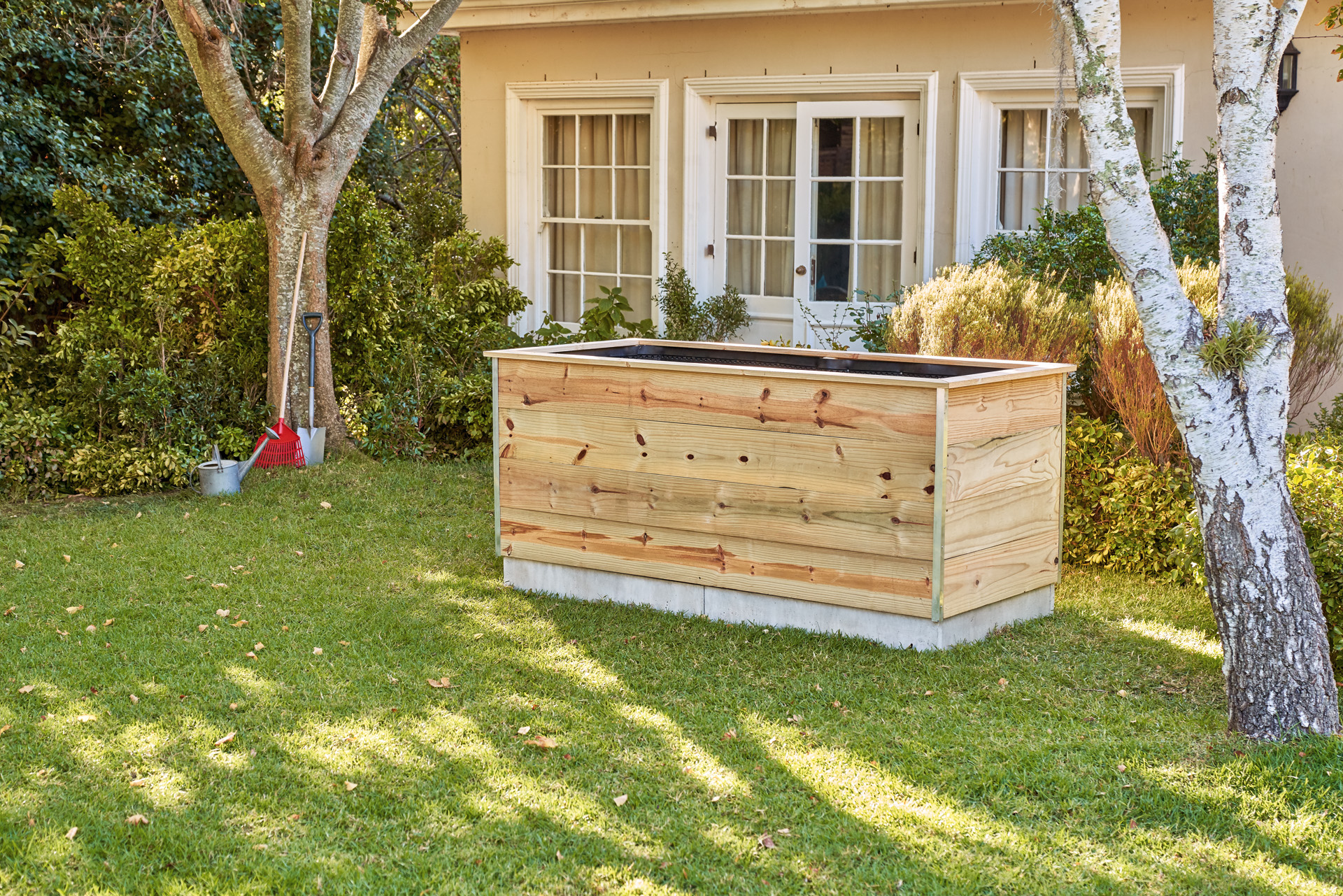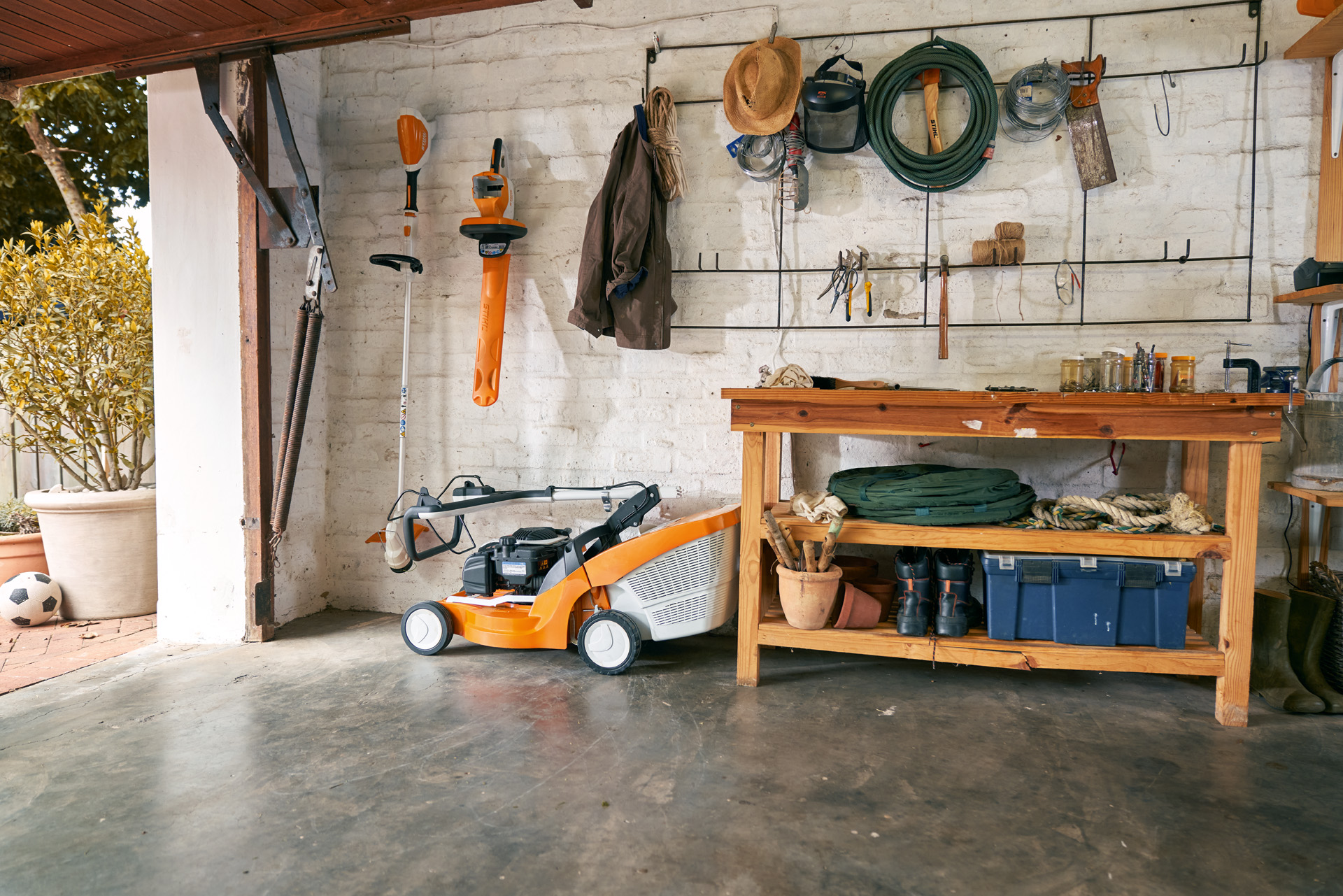Winter preparation of garden beds
As garden activity slows at the end of the year, your garden beds will benefit from extra care in preparation for winter.
14.07.2023

When should I start preparing my garden beds for winter?
Late autumn is the best time to get your vegetable, flower and herb beds ready for winter. Falling autumn leaves are plentiful at this time of year, and they make a useful mulch for protecting the plants and earth in your garden beds. For more ways to use and dispose of autumn leaves, take a look at our guide.
Trimmings from trees, hedges and shrubs can also be used for covering the ground if you chop them into smaller pieces with a shredder first. This provides excellent protection against cold and prevents exposed soil from being washed away by the rain while also putting your seasonal garden waste to work.
What to consider when preparing your garden for winter
Protection of frost-sensitive plants. The most vulnerable garden plants should be moved to sheltered winter lodgings to survive the colder months – a shed, conservatory, greenhouse or similar cool but frost-protected spot is ideal.
- Protection of hardy plants in the event of extremely hard frost. Even those species which can happily overwinter outdoors may require some support in particularly cold conditions.
- Protection of exposed earth. The right preparation protects soil in your garden beds by preventing it from freezing and from being washed away by rain.
- The growing season ahead. Planting bulbs and appropriate flowering species in late autumn saves on work in the spring and means you can enjoy an uplifting display early in the year.
Preparing your garden for winter: take care of your soil before the cold arrives
Investing some effort in your soil is the way to make sure your garden awakes from its winter slumber rested and ready for the new season. We highly recommend getting any heavy work done before temperatures drop too far – working on frosted ground is no fun! If you want to create new growing beds or extend an existing one, it’s also best to get this done before winter arrives.
Dig over garden beds with heavy soil
If you are growing in beds with hard or clay-rich soil, get the spade out and dig them over – this essentially means turning over the top layer of earth to the depth of the spade. This introduces air and moisture more deeply into the ground. Do not break up the turned-over clods of earth, as seasonal frost can do this work for you so that when you come to planting in spring, the ground is crumbly and easy to work.
Any soft green plant matter can be worked into the garden bed as you dig it over; it will decompose over time, enriching the soil with nutrients.

Cover garden beds with light, sandy soil
It's best not to dig over beds with light, sandy soils before winter, as it can cause them to quickly dry out. Instead, they benefit from winter preparation to improve soil quality by covering with mulch to protect against cold, dry weather and adding compost to feed the earth. You can mulch with leaves, bark, or compost; just spread a thick, even layer over the surface of the garden beds.
To extend or create a growing bed, first lift and loosen the earth. You can do this with a garden fork – alternatively, a pick tine will make the task much easier, as it breaks up and crushes hard earth. To avoid damaging the tool, clear the bed of stones, plant residue and weeds as much as possible before starting work. Once the earth is loose and workable, level the bed with a rake and plant seasonal bulbs and vegetables if you wish to. Then cover the bed with a protective layer of compost, straw, leaves or mulch. This will keep the ground warm over winter, prevent weeds and protect any newly added plants.
Winter preparation: protecting plants in containers
Outdoor potted plants shouldn’t be overlooked in your winter preparation and can be dealt with at the same time as your garden beds. First, check that the pots are made of a weather and frost-resistant material which will not crack in winter, such as fibreglass, plastic or polyrattan. There should also be several holes in the base of the pot, so that rain can escape easily and no standing water builds up in the container.
You can protect fragile pots and plant roots by wrapping garden tubs in bubble wrap, garden fleece or jute fabric. Jute fabric or garden fleece can also be used to protect leaves and stems: just wrap the plants and secure the fabric at the base. It’s a good idea to open this up on frost-free days. You shouldn't wrap the plants themselves in bubble wrap, as they can rot beneath it. To keep pots insulated on the underside, stand them on wooden boards or polystyrene panels. These steps will protect shrubs and ornamental grasses from dramatic temperature fluctuations. Rapid transitions between freezing nights and milder days damage delicate roots, often causing them to split, weakening the plant.
Winter preparation of garden beds: tools and equipment
This list summarises the materials and tools you’ll need for preparing your garden beds for winter. They may vary depending on weather conditions and the design of your garden.
| Protective winter garden fleece | To protect frost-sensitive herbs and plants. The material should be firm as well as water, light and air-permeable. Check that it is suitable for protecting against frost before you buy. Weed control fabric and propagation film are not suitable for this purpose. |
|---|---|
| Shredder | For chopping up green waste. |
| Spade or pitchfork | For digging over heavy soils. |
| Pick tine | For loosening lighter soils. |
| Hoe | For digging green manure and plant waste into soil. |
| Bubble wrap, canvas sacking and wooden board | To protect pot plants that overwinter outdoors. |
| Leaves and garden cuttings | For covering beds. |
- Remove any diseased or damaged parts from plants. This helps the plant conserve energy for when it’s most useful: supplying its roots over winter.
- Certain hardy vegetables such as kale and leek can be left in the vegetable bed for winter, and in fact, the flavour of kale becomes sweeter and milder in sub-zero temperatures.
- Parsnips, turnips and beetroot will keep going through the colder months and are excellent sources of winter vitamins. Tough lamb’s lettuce can keep you in garden-fresh salad all winter long.
- Dig over finished vegetable beds that have clay-rich soil, and mix compost and other plant matter into the earth. Beds with light soil should be loosened and planted with green manure.
- Green manures are a great alternative to mulch when it comes to winter preparation for vegetable beds. These are cover crops that you sow to improve soil structure, and suitable choices include white mustard, clover, rape and lupin. A generous sowing of green manure prevents important nutrients from washing away and supports the development of fertile soil. The plant layer will also keep the bed warm while loosening and feeding the earth.
- Sow your chosen green manure into the beds and leave over winter. When warmer weather arrives, simply work the plants into the soil before planting. Alternatively, you can use a rake or hoe to remove them and put them on the compost heap.

Dig up any frost-sensitive bulbs such as dahlias or gladioli. Store these in a cool, frost-free place, such as a cellar or garage.
Now is the time to plant shrubs and woody plants so they are ready to thrive when the days get longer. You can also plant spring-flowering bulbs such as tulips, narcissi, crocuses and hyacinths; they will happily survive the cold season in a well-prepared flower bed.
Remove spent annuals and withered flowers. If the plants show no signs of pests, they can go on the compost heap. That said, many flowers continue to look attractive and add structural interest even after they finish blooming, especially in frost. Better still, they provide a food supply for birds and serve as winter accommodation for insects, offering another opportunity to make your garden animal-friendly. Try leaving your echinacea, sedum, thistle and yarrow flowers on the plants until next year.
Cover the earth around shrub roses, hybrid tea roses and floribunda with compost and pine brush. Wrap long-stemmed roses in air-permeable fleece.

Lavender and sage are winter-hardy herbs, though they can still be damaged by severe frosts. Pine or fir brush wood makes a great winter cover for beds with these herbs. Alternatively, you could replant the herbs in pots, which are easy to cover with protective fleece and keep outdoors.
Staple culinary herbs such as mint, parsley and chives will die back over winter. To make sure they come back strong, cover the surface of their beds with a layer of leaves.
Move delicate frost-sensitive herbs, such as lemon verbena, into the house when temperatures drop. They are happiest in a light and humid position at a temperature of 10 to 15 degrees.


You reap what you sow. The cooler months give you an excellent opportunity to prepare your garden for the liveliness of the next season. Taking care of necessary tasks in autumn gives you more time to spend on your garden in spring.
Summary: winter preparation of garden beds
- Start preparing your flower, herb and vegetable beds for winter before the coldest days arrive.
- Winter preparation means digging new beds as well as cultivating existing ones. To improve the quality of clay or silt-heavy soil, dig the bed over, but there’s no need to break up the turned earth. For lighter soils, loosen with a pick tine and cover the surface with mulch, leaves or compost.
- Avoid using mineral fertiliser at this time of year. It promotes rampant growth at a time when plants need to rest, and this impedes their frost resistance. Because organic fertilisers take time to decompose and become effective, they can be applied in autumn.
- Don’t overlook outdoor potted plants in your winter preparation. Wrap pots and tubs in jute or garden fleece, and stand them on wooden boards or polystyrene panels.
- A green manure crop provides outstanding winter protection for vegetable beds.
- You can make a herb bed winter-proof by covering it with pine or fir branches. Alternatively, you can replant many herbs in pots, then cover them over with winter protection fleece and keep them outside.
- Bring frost-sensitive flowers and herbs inside.
- When preparing your flower bed for winter, leave the spent blooms on perennials: they are a valuable food source for birds and provide shelter for insects.





